Table of Contents
I receive a lot of questions about bicycle frame geometry, so I’ve pieced together this resource to discuss the reasons why bicycle frames are built to the lengths and angles that they are. This information will allow you to look at a geometry chart online, and understand how different bikes will ride without testing them!
It’s important to note that bicycle geometry is different for each bike size, given our varying heights offer different body proportions. At the bottom of each geometry feature, I have incorporated a comparison between a road, cyclocross and touring bike with 57cm top tube length. This should help you understand how changes to geometry suit different cycling disciplines.
Right, let’s get to it!
Understanding the Steering
The front end of the bike is a bit complicated but we can work through it.
There are three measurements at play:
Head Tube Angle
Fork Rake (or Offset)
Fork Trail
Out of the three, Fork Trail arguably tells us the most about how a bicycle will steer. But let’s start with the head tube angle.
Head Tube Angle
The headtube angle is the angle at which the head tube is to the ground.
A bike with a steeper head angle has faster steering. There is less effort required to steer it.
A bike with a slacker head angle has slower steering. There is more effort required to steer it.
Touring bikes use slacker head angles when compared to their road/cx relatives because they generally carry a front load, and a slower steering speed helps with stability when a bike is moving at moderate to high speeds.
Head Tube Angle Comparison for 57cm Bikes:
Touring bikes 71-72 degrees
Road bikes 73-74 degrees
CX 72-73 degrees
Fork Rake (Offset)
Fork rake is the offset of the fork dropout from the straight line of the steering axis (centreline of the fork’s steerer tube).
Increasing the fork rake makes steering faster.
Decreasing the fork rake makes steering slower.
Touring bikes have more rake than road and cyclocross bikes in order to increase their wheelbase length, provide more toe clearance from the front wheel and to increase the fork’s vertical compliance. But hang on… touring bikes have more rake compared to road/cx bikes yet they steer slower? Well, fork rake is only one ingredient in the steering equation. Let’s talk about ‘trail’ to understand the rest.
Fork Rake Comparison for 57cm Bikes:
Touring forks 45-52mm
Road forks 40-45mm
CX forks 45mm.
Fork Trail (Fork Offset)
The product of the head tube angle and the fork rake is the ‘trail’. This is the measurement that gives us the best indication of how fast a bike will steer. It’s a measurement not often provided by bike manufacturers despite being the most important steering speed information for the handling of the front end.
Less trail equates to faster steering. Making a bike feel more nimble like it’s steered ‘with your hands’.
More trail equates to slower steering. Making a bike feel more stable like it’s steered ‘with your hips’ (leaning).
Touring bikes have a lot of ‘trail’ to slow steering response and keep heavy loads stable on fast descents. On the other hand, high trail bikes experience more ‘wheel flop’ making it harder to keep a straight line at slower speeds (although front panniers tend to dampen this feeling).
In an ideal world, a bike designed to use a wide handlebar (flat, riser, alt bars) will benefit from more ‘trail’ than a bike using road handlebars. This is because wide bars provide greater steering leverage and therefore require less steering input when turning.
Trail Comparison for 57cm Bikes:
Touring bikes 55-70mm trail
Road bikes 50-60mm trail
CX 55-65mm trail
Steering Summary
A touring bike’s geometry is optimised so that it’s stable carrying front and rear loads. This is evident through the slacker head angles and higher ‘trail’ than both road and cyclocross bikes.
Road bike steering is tuned to be fast with its low trail geometry. This makes sense in a racing situation where you may need to change direction in a split second. On the other hand, cyclocross bike geometry tends to fall somewhere between that of a road and touring bike.
Some randonneur, bikepacking or light touring bikes are designed with less trail than even a road race bike (sub-40mm). The idea is that a quicker steering speed is offset by the heavier steering input of a front load. On a bike with road handlebars using a sub-10kg (22lbs) front load, I tend to really like this design approach. However, I’ve found that low trail bikes ride a bit strange without any front load. They can also be a little harder to handle with heavy front panniers at higher speeds too.
Chainstay Length
One of the more important measurements on a touring bike is the chainstay length. A longer chainstay length is desirable to increase the wheelbase (making the bike more stable at speed) and to provide ample heel clearance from the panniers. Heel clearance is especially important for riders with larger feet (size 11-13 / 46-49) as your feet can sometimes strike the rear panniers when you pedal. That said, there are rear racks that push your panniers further back if you need.
Chainstay Length Comparison of 57cm Bikes:
Touring bike 445-470mm
Road bikes 405-415mm
CX 420-435mm
Wheelbase
A longer wheelbase provides a more stable and comfortable ride. Touring bikes have a long wheelbase due to a combination of a slack head angle, long fork rake and long chainstay length.
Wheelbase Comparison of 57cm Bikes:
Touring bikes 1050-1070mm
Road bikes 996mm
CX 1018mm
Bottom Bracket Drop
Bottom bracket drop determines how high your cranks sit from the ground when you pedal. A lower bottom bracket results in a lower saddle height and therefore a lower centre of gravity.
Touring bikes may need pedal clearance over obstacles, so some manufacturers provide a high bottom bracket (53mm drop with 700c wheels). This is generally offered on off-road touring bikes. Other manufacturers provide a low bottom bracket (78mm drop with 700c wheels) to maximise the stability of the bike, albeit at the risk of pedal strike at times. This is more common with the road-oriented touring bikes.
Seat Tube Angle
Seat tube angles don’t differ a lot between touring and road/cx bikes of the same size. This is because optimal pedalling positions aren’t too different between bikes. That said, there is some variation between touring bikes. The more upright models (taller head tube) will offer a slacker seat tube angle to match your less rotated pelvis.
Seat Tube Angle Comparison for 57cm Bikes:
Touring bikes 71-73 degrees
Road bikes 73 degrees
CX 73 degrees.
A very general bicycle fitting rule (to optimise pedalling efficiency) is to have your knee reach the pedal axle (see diagram). If you were to slacken a seat tube angle, your knee may not reach as far as the pedal axle (and would, therefore, be less efficient, cause knee pain etc). You can see my resource Understanding Bike Fit for more information on optimising your position.
Stack and Reach: Important for Comparing Bikes
Stack and reach measurements are the best information we have to know if a bike will fit us, without test riding it first.
These measurements assess the virtual position of the headtube in relation to the bottom bracket, essentially standardising bike geometry/sizing between brands and models. This is important because bikes from two manufacturers that are both called the same size (eg. medium or 54cm) can actually fit up to 2cm (a full size) different from one another. If the companies you’re looking at don’t have the stack and reach data on their website, here is a virtual calculator.
You can get a professional bicycle fitter to determine your appropriate stack and reach, making it much easier to find a perfectly fitting bike. Alternatively, you can measure up a bike you’re comfortable riding with a tape measure to find out its stack/reach.
Effective Top Tube Length
The effective top tube (ETT) length is the simplest way to determine a bike’s size. That said, just because the ETT is the same between the two bikes, it doesn’t mean the bikes will have the same reach.
Seat Tube Length
Seat tube length isn’t too important for most people with the exception of those who need additional standover clearance (often smaller riders). Again, it’s best to compare bikes based on their stack and reach measurements if you can.
Head Tube Length
Long head tubes are common on touring bikes in order to prop the bars up high without the use of excessive headset spacers. Head tubes are often 40mm+ longer than the equivalent road or cyclocross bike
You Can Also Check Out My Resources For Getting A Bike Fit and Finding The Most Comfortable Saddle


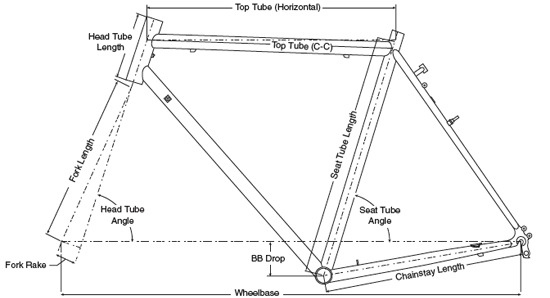
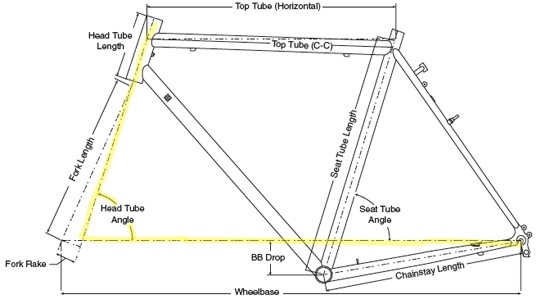
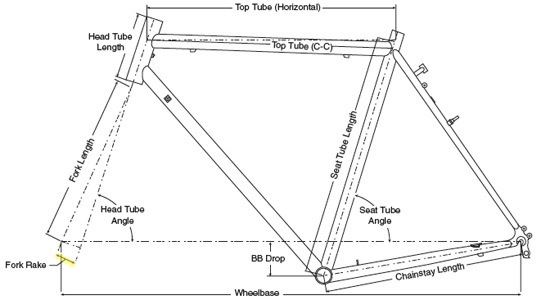
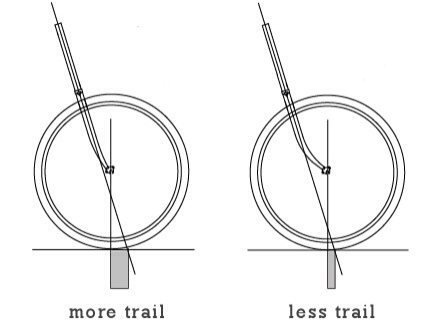
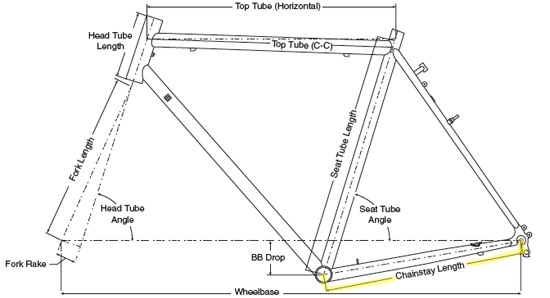
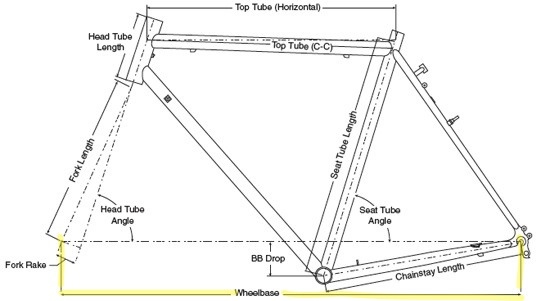
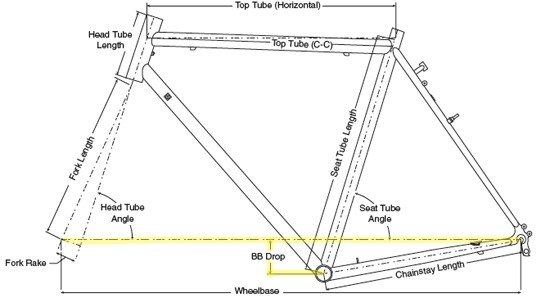
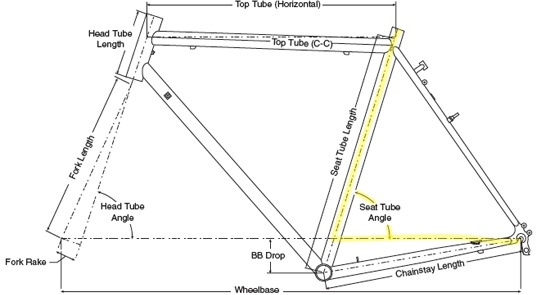
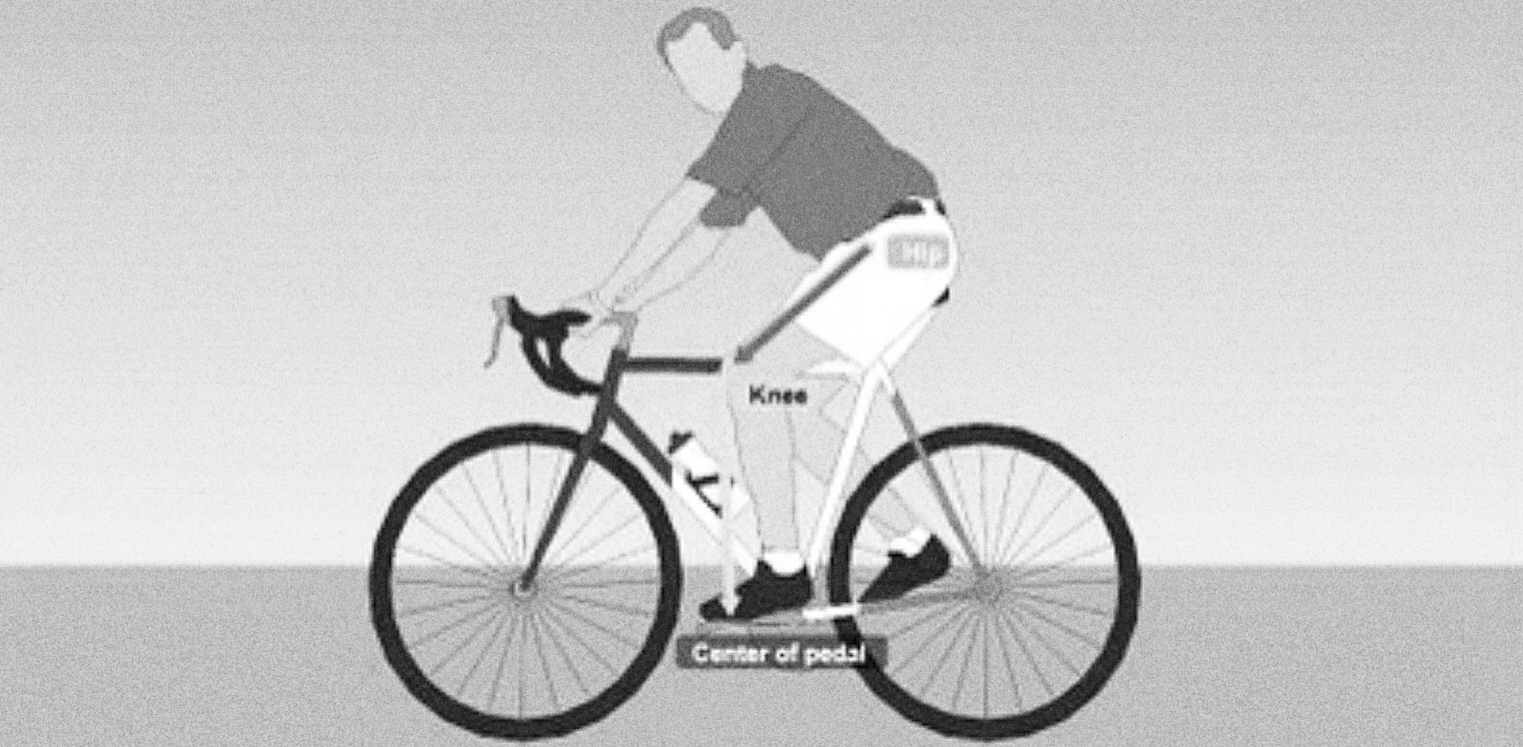
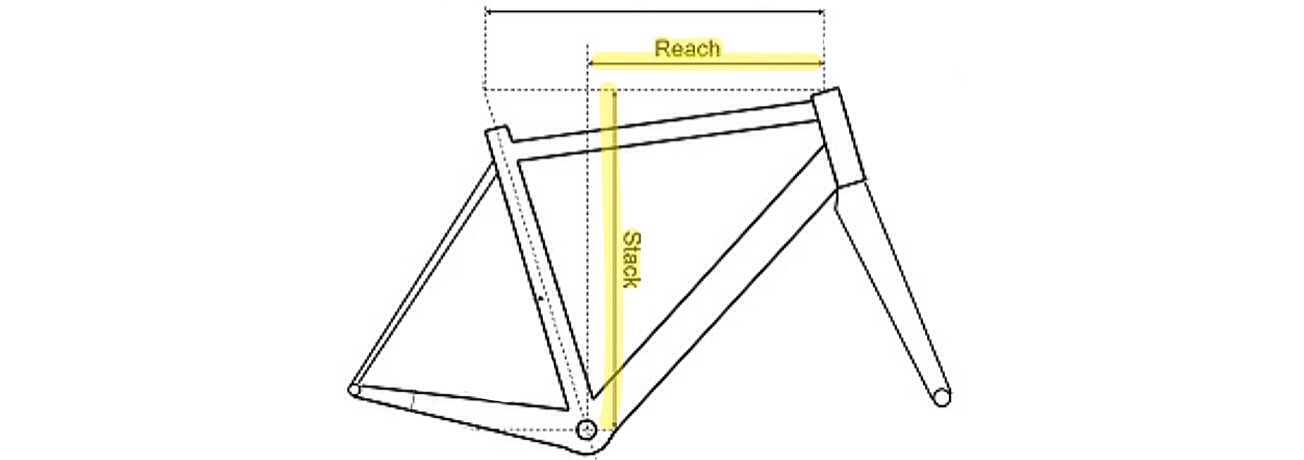
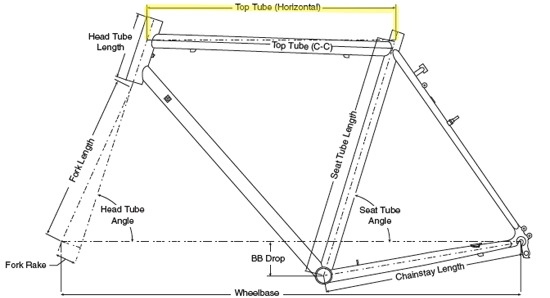
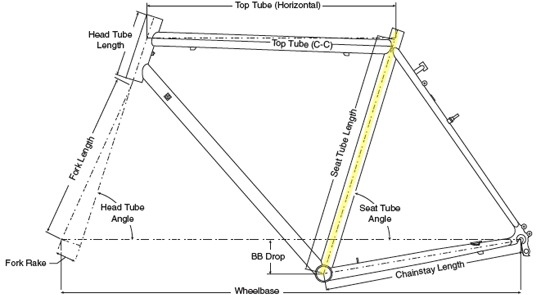
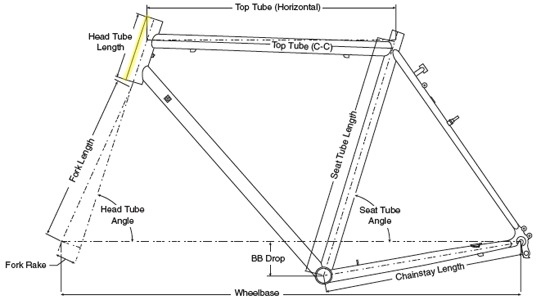
Alex, have you considered running a long, angled stem like the Amoeba riser stem instead of all the head tubes? They’re specially designed to run drops on MTBs. I currently tour on an LHT (pic included), but I’ve built up a 29er for off-road touring and am going to give it a go with drops and a riser stem.
There are many ways to get the front end higher: long steerer tubes with lots of spacers, ‘heads up’ steerer extenders and angled stems to name a few. They all work, but in our mind a long headtube with a few spacers will always be the stiffest and most attractive option.
Interesting article. Nice to see how the biking concepts have evolved
and grown into their own. The packs shown seem like a must have. Great
piece.
https://www.spinlister.com/
Fork rake and trail sounds a bit like caster and camber.
So let me try get this straight – track bikes have a straighter head angle to make the steer faster, then less rake to make them steer slower – one compensating for the other? Then by putting a road fork on a track bike, I’m in fact making it steer faster once more?
And why do track bikes prefer using the head tube as a determinent for steering speed? More stable than relying on rake?
And it keeps the wheelbase shorter… answering my own questions here. Always worth verifying I guess
1. Road fork on a track bike would speed up the steering because it decreases the trail.
2. It’s all about wheelbase on a track bike. You’ve got to fit in some tight gaps! Steep HA + minimal fork offset = shorter wheelbase.
Nice article! question… which is the most preferable to use for touring bikes, road bikes or mountain bikes? as it’s really hard to find a real touring bikes at my places.. (absolute newbie)
You are better off using a mountain bike, partially because the geometry is closer to a touring bike, but mostly because the parts will be much more durable.
Hi Please can you correct your use of “bikes” and bike’s” – it would make this interesting article easier to read! Many thanks. Nick
Fair comment, I’ll run over it to check for errors. Alee
Does this apply to mountain bikes too? Increased my fork from 100 to140 travel. Im concerned about it’s effect on the geometry.
There is one definite quibble I have to voice; Tire size has no bearing on BB drop. It is solely a function of the height of the axles and the BB, as your diagram clearly shows. Trail is very much affected by tire size, though, since it changes the diameter of the wheel. Despite my complaint, thanks for a very welcome presentation on frames.
You’re correct. My statement was referring more to the bottom bracket ‘height’ rather than ‘drop’. I’ll fix up the wording. Cheers.
What if you could have forks with different trail values on same bike? Respected blogger Velouria (from Lovely Bicicle! blog) had the chance to test just that: different rake forks on the same bike, on a long term test. Here’s the full review: http://lovelybike.blogspot.com/2015/11/a-rakes-progress.html#more
Thanks for sharing! It’s always interesting reading about trail as steering is more complicated than we think! Handlebar width/type, stem length and personal preference play such a big role as well.
I know this is an old article, but still relevant. Thank you for explaining all these geometry components and how they affect the bike handling. Explanations here are meant for touring/road bikes. Do these hold for MTBs as well?
Thanks! It’s almost all relevant, with the exception of the shorter chainstay lengths on MTBs which are designed to make it easier to ‘pop’ the front wheel or bunnyhop (obviously less relevant on a touring/road bike).
I might put together a mountain bike specific geometry article soon. There’s a few things I want to explain which will make it easier to buy a really good handling MTB.
I would like to get back into cycling but I can’t seem to find a bike that fits me. I can’t buy extremely expensive bikes so I shop at the local department store. The issue I’m having is that even with so called 29″ bikes. My feet still end up hitting the front tire when I turn. I’m guessing that I need to find a bike with more head tube angle but I can’t seem to find anything like that. I would love any recommendation that could be offered.
Hi Michelle. Toe overlap is pretty common on all bikes, especially in the small-mid sizes. You can avoid it somewhat with a slacker head angle, a longer fork rake and smaller wheels. Trek make their bikes with slacker angles and longer rake, and the wheel sizes are matched to the frame sizes. (ie. 27.5″ wheels on bikes under 15″). Definitely check them out.
I stopped at an actual bike store the other day and the salesman there talked about a crank forward bike. I sat on one and it seemed comfortable but time constraints made it difficult to test out. How is a crank forward different from a regular bike? Would it work better than modifying a head angle?
Crank-forward bikes aren’t designed to reduce toe overlap. Depending on the model, they may even make toe-overlap worse. Crank-forward bike are designed with comfort in mind, allowing you to sit more upright. The downside to this style of bike is that they’re less performance-oriented than a traditional bike, and therefore tend to be better for covering short distances.
I bought a 1997 Giant Rincon in college (mountain bike, no shocks), and have always loved the feel of the bike.
Since then I’ve tried to find a “better” bike, but I haven’t been able to find one with the same feel. I presume it’s the geometry of that frame. I can ride easily without hands on that bike, but most other bikes I can’t. I just checked the trail of my wife’s and kids’ bikes, and they seem about the same. Wikipedia states that mechanical trail dictates whether you can ride no-hands (https://en.wikipedia.org/wiki/Bicycle_and_motorcycle_geometry#Mechanical_trail), but that doesn’t seem to be true for me.
With my Giant, if I just stand there and lean the bike left and right the front wheel follows, pointing left and right. On the others, if I lean the bike the front wheel goes hard to that side and won’t move if I lean the bike the other way.
1997 Giant Rincons are surprisingly rare. What would you do if you were me, wanting to find a new bike with a similar feel to that one?
You’ll find that the touring bikes of today share very similar frame geometry to mountain bikes of the 1990s. With a 71 degree headtube angle, 45mm fork rake and similar tyre dimension and seat tube angle – a bike like the Surly Long Haul Trucker would have to be the most similar ‘new’ bike.
Otherwise, I’d suggest sourcing a frameset from almost any brand from the same era. There was very little difference between most models in 1997.
Interesting, thanks for the response!
How did you find the geometry specs for the Giant Rincon? I’ve been looking online and haven’t seen them anywhere.
The Surly bike you reference looks like a road bike (curl-around handlebars, etc.). I’m looking for something with mountain bike handlebars and wider tires. (Mine looks like this: https://files.bikeindex.org/uploads/Pu/11088/large_1998_Giant_Rincon.JPG )
You mention “sourcing a frameset” — what does that mean? I’ve never heard that term.
Thanks again!
– I found a geometry chart of a very similar bike from 1997 on RetroBike.co.uk.
– Many people spec a flat handlebar on the Surly LHT, that’s not really an issue.
– The Surly LHT will fit a 2.2″ tyre.
– ‘Sourcing a frameset’ refers to finding a second hand 20 year old frame and fork.
The *only* way to get shock absorption with a metal fork is to put more rake in it. A touring cyclist is going to want more absorption on account of the heavy load. Increasing the rake decreases the trail. Hence, the head tube angle must be slackened so that the rider does not have a twitchy, “zero trail” bicycle. That bicycle loses steering response on account of the head tube angle. A touring cyclist is happy with that.
Carbon fibers can be laid differently and flex can be designed into a fork. A carbon fork could be designed to have nice absorption with minimal rake. Then the trail calculations have a lot of options. Happy riding, everybody!!
The “touring bike” steering geometry also helps in a cross wind. A “more responsive” geometry will allow the wind to fight your steering control.